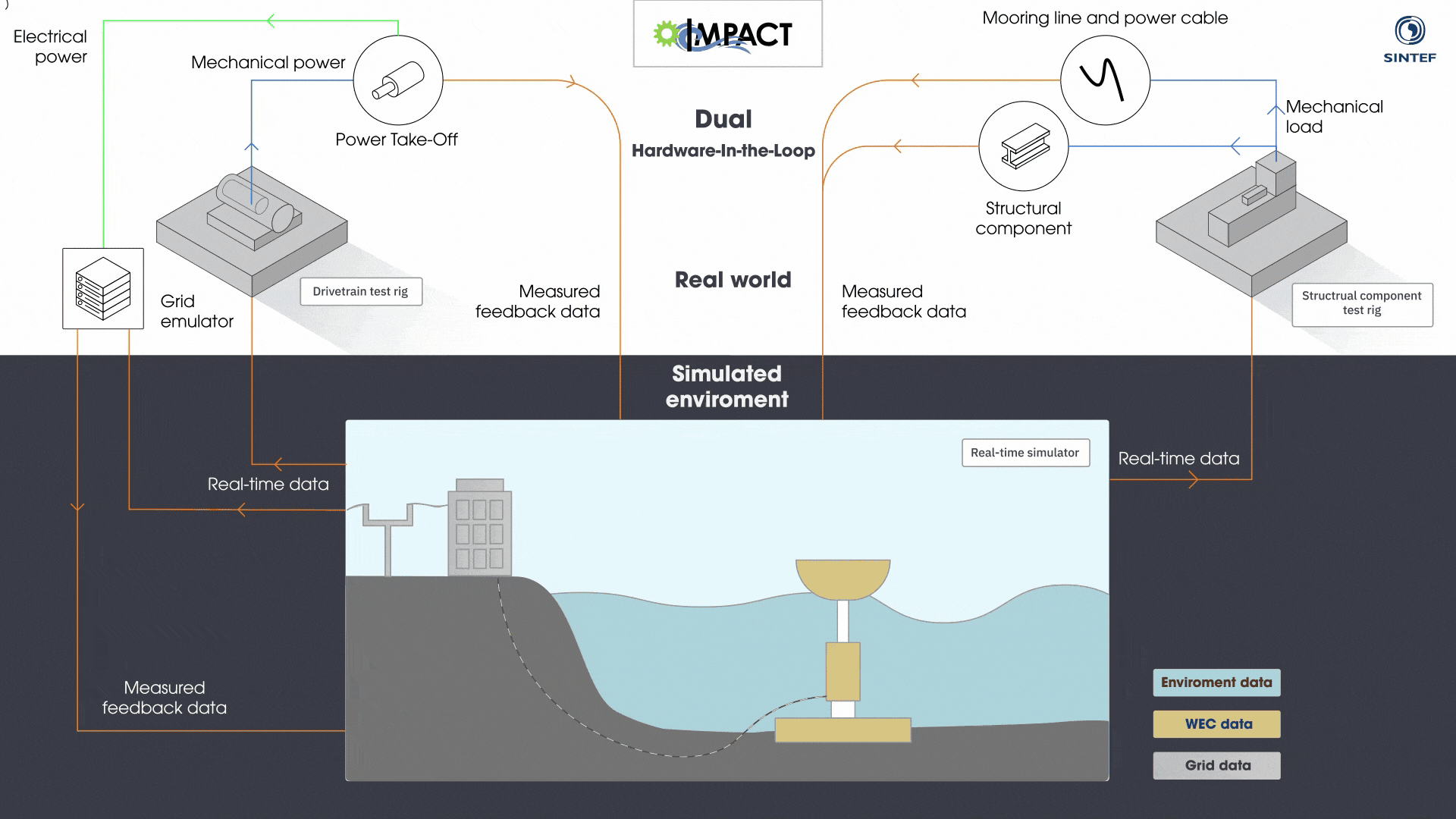Novel “Dual-Hardware-In-The-Loop” testing platform can accelerate wave energy converter development
The European project IMPACT has developed an innovative approach for testing wave energy converter (WEC) reliability, performance and destructive testing. The dual hardware-in-the-loop (Dual HIL) platform tests different parts of the WEC simultaneously, providing a holistic picture of how the various components behave and impact each other. As such, this approach increases confidence for WEC deployment, while reducing both the time and expenses connected with testing.
“The IMPACT project resulted in a new testing infrastructure and applicable methodologies that can be used by WEC developers to accelerate their technology development pathways, and find out eventual criticalities associated with a subsystem or even at WEC level,” said Giacomo Alessandri from VGA, the project’s coordinating partner.
“The rigs have been designed and proven to be as flexible as possible, to address tests of different WEC and subsystem types, therefore adding a missing brick at the EU level. These capabilities will play a fundamental role in the near future, especially for developers requiring de-risking activities prior deployment of sea-going prototypes.”
Rig testing is key for evaluating WEC reliability
While WEC development has advanced significantly in recent years, several significant obstacles to its commercialisation in remain; in particular, ensuring the device’s reliability and the performance of the power take-off.
Rig testing enables us to address these challenges before the WEC undergoes operational tests in the sea, increasing its chances of success. IMPACT’s Dual HIL testing platform takes advantage of traditional hardware-in-the-loop (HIL) testing, while also enabling the developer to factor in dependencies between the subsystems. This not only gives the developer a more thorough understanding of the WEC as a whole, but enables them to anticipate possible failures resulting from the interaction among different subsystems.
Dual HIL tests two rigs simultaneously
The Dual HIL platform consists of two independent rigs that can run simultaneously to test two different WEC subsystems at a time: a drivetrain test rig and a structural components test rig.
The drivetrain test rig was originally constructed as part of the concluded EU project IMAGINE, but further upgraded through IMPACT, to test linear and rotary PTOs for different types of WECs, and to emulate different grid conditions and the point of common coupling. During the project, these new capabilities were demonstrated by characterising the performances of an off-the-shelf drivetrain (including a rotary geared generator, generator- and grid-side converter).
The structural components test rig was designed and constructed in IMPACT, to test the integrity of components that are under mechanical stress, such as the mooring system, dynamic power cables, joints and seals. This rig has already been used to test the belt of Carnegie Clean Energy’s CETO 6 wave energy converter.
In the Dual HIL, these two rigs run concurrently, targeting different parts of the WEC. This feedback data is fed back into a real-time simulator, and used collectively, together with environmental data, to influence the next round of tests for both rigs. The result is a holistic picture of how different parts of the WEC interact under different environmental conditions.
The IMPACT platform will now continue as part of the Structural Wave Energy Equipment Test (SWEET) Lab at VGA’s facilities in Deruta, Italy.
About IMPACT
IMPACT is a European project, consisting of five partners: VGA in Italy, Yavin Four Consultants in Portugal, SINTEF Energy Research and SINTEF Ocean in Norway, and University College Cork (SFI MaREI) in Ireland. The project ran for three and a half years from 2021 to 2024, and received funding from the European Union’s Horizon 2020 research and innovation programme under grant agreement no. 101007071.
More information about the project, its partners and its results can be found on the project website: https://www.impact-h2020.eu/


